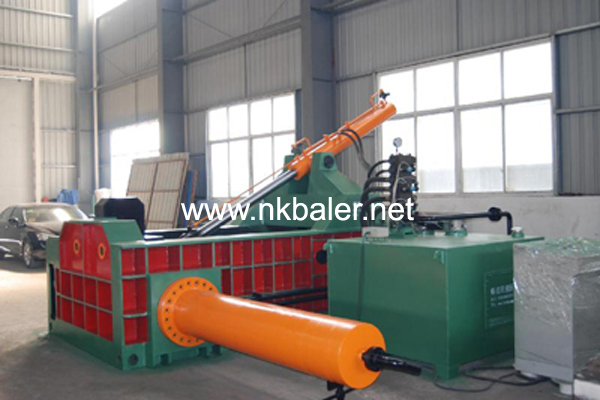It can compress scrap metal materials into bales of a certain specification, facilitating transportation and storage.Metal baling machines are characterized by their efficiency, energy saving, and environmental protection, and are widely applied in industries such as scrap metal recycling, smelting, machinery manufacturing, and construction.Metal baling machines are further divided into door-type metal baling machines and hopper-type metal baling machines. Here are their similarities:Compressing metal: The primary function of both types of baler is to compress metal materials, forming the metal into blocks of a certain specification for easy transportation and storage.Environmental friendliness: Both types of baling machines are environmentally friendly, reducing waste of scrap metal materials, improving resource utilization rates, and decreasing environmental pollution.However, each type also has its unique advantages, which are outlined below:Structural form: Door-type metal baling machines typically use a door-type structure, while hopper-type metal balers employ a hopper-type structure.Compression method: Door-type metal baling machines use a bidirectional compression method, compressing materials into blocks from two directions. In contrast, hopper-type metal baling machines use a unidirectional compression method, pushing materials into the compression chamber through the hopper for compression.Application scope: Door-type metal baling machines are mainly used for compressing large materials such as scrap steel, construction rebar, and household appliance casings. Hopper-type metal baling machines are primarily used for compressing small materials like aluminum cans, light scrap aluminum, copper products, aluminum chips, and aluminum turnings.

Operation mode: Door-type metal baling machines usually feature manual or semi-automatic operation modes, while hopper-type metal baling machines utilize fully automatic operation modes, significantly enhancing production efficiency.
Email:info@nkbaler.com Nickbaler888@gmail.com
WhatsApp: 008615021631102

